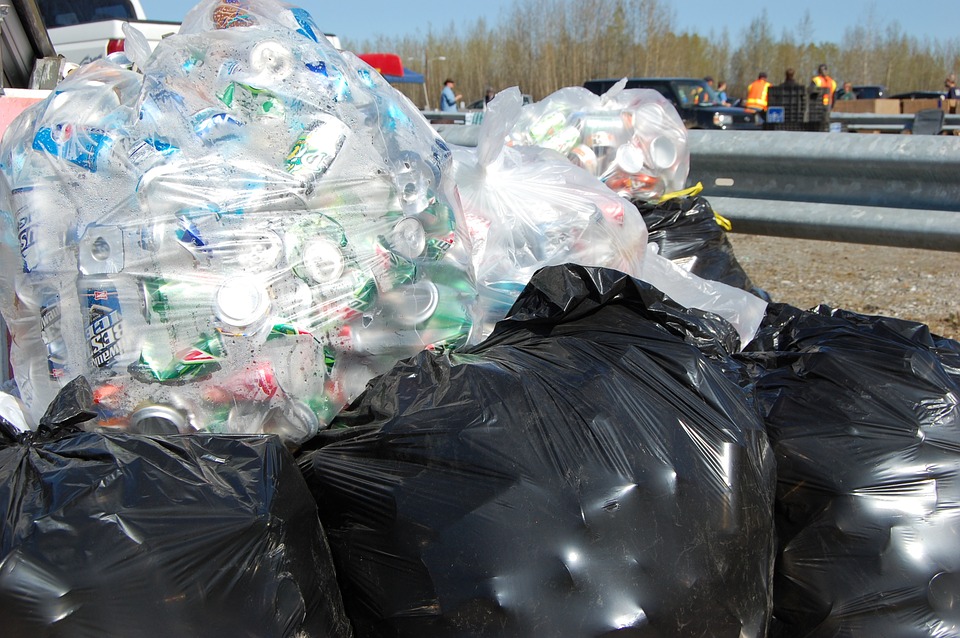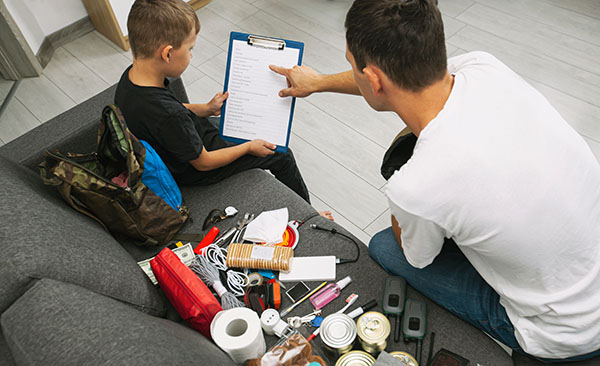
As a prepper, you may need to set up an outdoor shower so you can take showers and stay clean after SHTF. Decide if you're building a gravity-fed shower or a pump-powered shower, then read on to learn how to build your off-grid shower. (h/t to PreparednessAdvice.com)
DIY shower basics
A shower requires flowing water, which requires energy. The oldest way to create flowing water is to use gravity.
If you want a more modern option, you can induce water to flow using a pump. If you want your off-grid shower to have hot water, you will need a water heater. (Related: Prepper projects: Setting up a rainwater shower at your homestead.)
Gravity-fed shower and a pump-powered shower: pros and cons
A gravity-fed shower requires more physical labor, but pumps require electrical components.
Here are some factors to consider if you're still deciding between the two options.
Gravity-fed shower pros:
- It's free.
- It's always on.
- It doesn't need electricity.
Gravity-fed shower cons:
- Water weighs at least eight pounds per gallon.
- The water must be elevated to create water pressure.
- The flow will vary with the water level in your container.
Electric pump shower pros:
- A pump-powered shower doesn't require an elevated water container.
- It provides consistent pressure.
Electric pump shower cons:
- It requires an electrical supply.
- A solar power source only works during daylight hours.
- A battery is required for cloudy days or at night.
- Requires more equipment to maintain.
- More expensive than a gravity-fed shower.
Creating water pressure
Your chosen shower requires these components to create water pressure:
Storage vessel
You can use a bucket, a water barrel, a trough or a bag as a water storage device. If you want a bigger container, you can use a five-gallon container, 15-gallon barrels, 45-gallon barrels, 55-gallon barrels or even a 275-gallon tote.
Whatever you choose, you should be able to fill it with water, cover it to keep the water clean and attach it to the plumbing. The storage container doesn't need to be very large since you only need about two gallons of water for a quick shower.
Plumbing
Install a rigid pipe or hose to carry the water from the storage container to the shower. You also need to install a fitting to connect the vessel to your plumbing.
Using a 1/2 inch rigid pipe is more permanent, but a hose is more straightforward. Additionally, you'll need a valve to start and stop the water flow. The valve you use will depend on the plumbing layout.
The showerhead will also depend on the plumbing layout. Use a manufactured showerhead or make your own.
For a gravity-fed shower
Achieving the elevation required to create water pressure is the most challenging part of building a gravity-fed shower.
Place the water storage vessel above the level of the showerhead. The higher the vessel is, the more water pressure is created. It only takes a few pounds of pressure to make a soothing shower spray. If you don't mind sitting while you bathe, the vessel can be set six or eight feet off the ground.
For a pump-powered shower
A pump is an easy and convenient way to power your shower.
An electric pump eliminates the need for elevation to create pressure, but a pump will still require a water supply and some plumbing.
Set up an electrical supply or use solar power if you choose to use a pump. A medium-sized solar panel can power a small 12-volt water pump for a solar-powered shower. Alternatively, you can use a 12-volt battery to provide power for night showering.
Other essentials
You'll need the following to complete your DIY shower.
Floor
You need a solid or elevated surface for drainage and to avoid making a mess.
The shower floor must be sturdy and slip-resistant, so use a material with some texture. A comfortable shower area should be at least two feet by two feet.
Here are some material options for an elevated drain through the floor:
- Plastic decking
- Plastic floor grate
- Steel floor grate
- Wood slats
Elevate the floor structure several inches off the ground and dig a shallow trough under the floor to collect the water. A shallow ditch will drain the water away from your shower area.
Don't use pressure-treated wood for the standing surface because the chemicals in pressure-treated wood can be toxic.
Here are some material options for a drain on a solid surface floor:
- Concrete blocks
- Concrete pavers
- Concrete slab
- Tiles on a sand bed
If the floor is a solid surface, leave a slight pitch to avoid puddling. A slope of 1/4 inch per foot of floor is adequate.
Walls
You might think it's easier to build an off-grid shower without walls, but walls provide some protection from the wind, especially since even a slight breeze will cause chill once you're wet all over. Build a simple stall with the following materials:
Shower stall frame materials:
- Light gauge steel pipe
- Lumber
- Schedule 40 PVC or ABS pipes (Don't use thin-walled PVC pipes.)
A wall panel can be made from any material that will provide some privacy and break the wind. Lightweight materials are preferable since they are great for easier construction and require a less substantial support structure.
Shower stall wall panel materials:
- Corrugated steel or fiberglass panels
- Plastic tarp
- Plywood
- Wood fence pickets
Alternatively, you can set up a door that only requires a set of hinges and a latch.
Build a DIY off-grid shower so that you can still take showers after SHTF.
Watch the video below for hygiene and sanitation tips after SHTF.
This video is from the Prepping101 channel on Brighteon.com.
More related stories:
Survival essentials: Tips for long-term water storage.
Affordable home water storage for preppers.
Back-up plan for your back-up plan: What will you do when your water stockpile runs out?
Sources include:
Please contact us for more information.





















